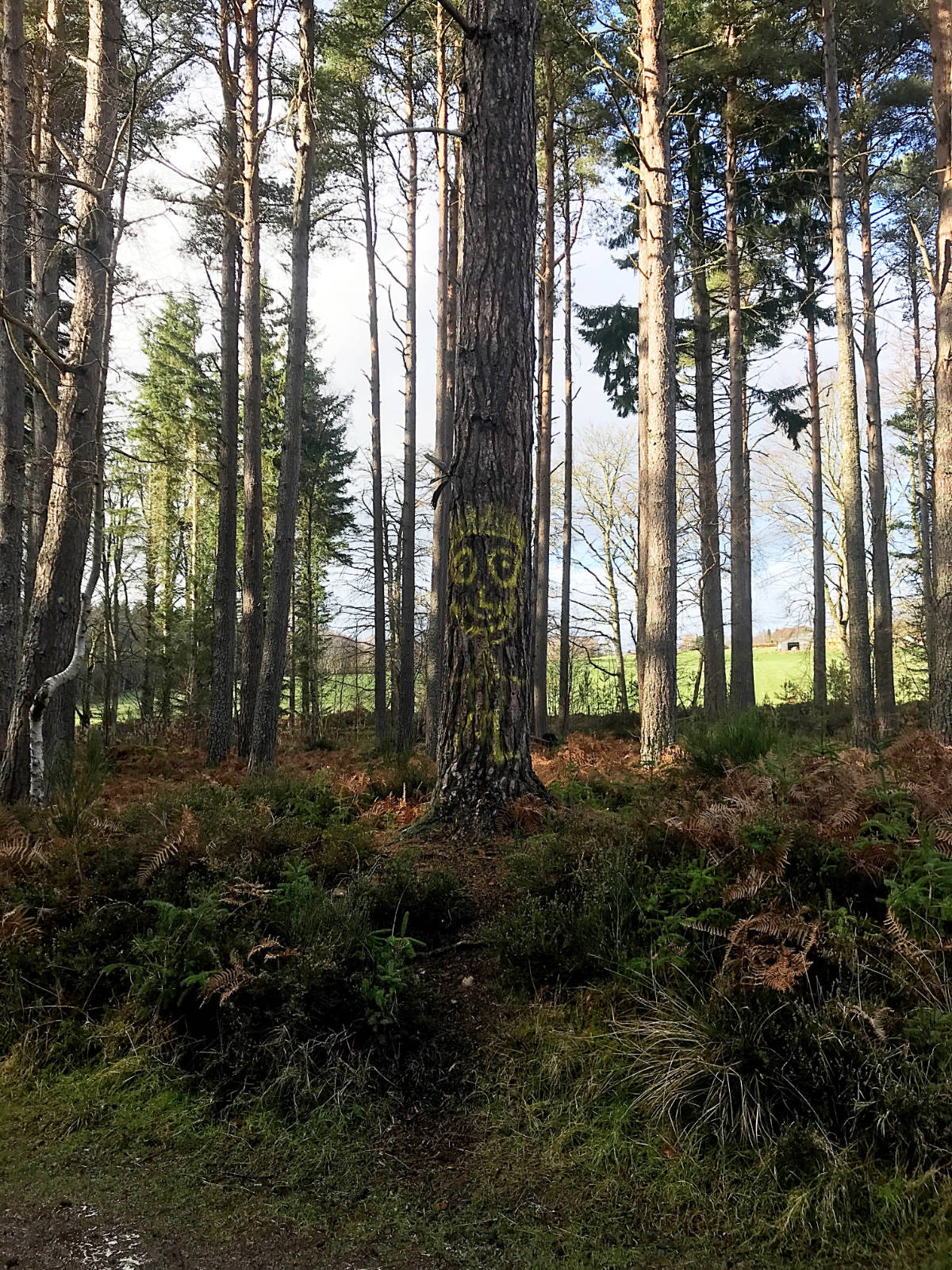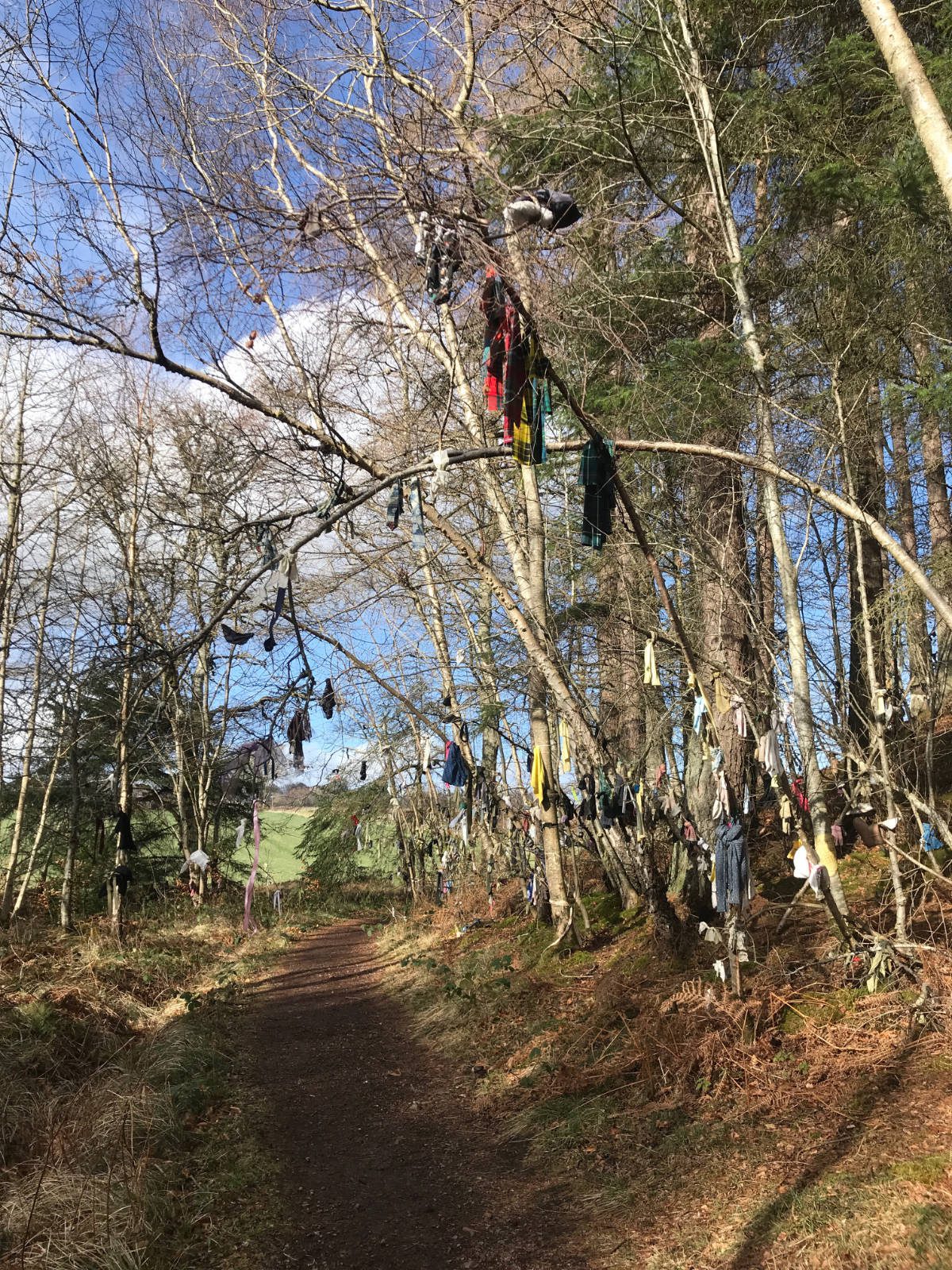Pagan offerings in the forest
The clootie well at Munlochy has been in the news recently as someone cleared the area of all its ‘offerings’. Here is a look at what the clootie well looked like on our last visit, in a pre-lockdown pre-COVID world…

Where
This one is just by Munlochy just off the A832 on the Black Isle peninsula, north of Inverness, Scotland. There is also a well known as St Mary’s Well near the battlefield at Culloden.
In Ireland, there is one at Loughcrew, Oldcastle, County Meath and in England, Cornwall, at Madron Well, but once upon a time, these would have been more common across the UK and Ireland.

What is a clootie well?
In Scots, a cloot (clootie) is a cloth. Usually a small rag, like the size of a hand towel. Clootie can refer to a cheesecloth kind of material that is used to cover food when steamed such as a clootie dumpling. The dumpling is wrapped in a cloth then cooked. There is also a saying mentioning cloot ‘Ne’er cast a clout till May is out’ which basically means don’t take off clothes till the end of May. I’ve always thought of it as kind of meaning keep your warm clothes on as summer isn’t here yet!

What happens here?
Pieces of cloth, from the sick or needy person, are dipped in the water of the well and then tied to a branch whilst saying a prayer.
At some wells, the tradition is to wash the affected part of the body with the wet cloot and then tie the cloot onto a branch. As the cloot disintegrates over time, the ailment is supposed to fade away as well.
If you do visit to leave a rag, please remember to use a biodegradable one. ❤️


Address
Munlochy Clootie Well, A832, IV8 8AD





